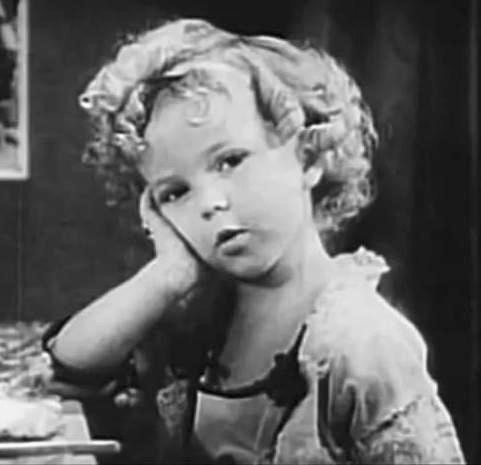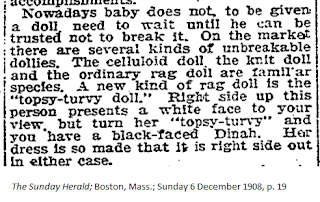© Kathy Duncan, 2024
In 1865, Izannah Walker was enumerated on the Central Falls, Rhode Island census. In 1867, she was specifically located at 11 Jenks in Central Falls.
A newspaper clipping from 1864, also places Izannah in a house on Jenks Street. More importantly, it indicates that she was an enthusiastic supporter for the re-election of Abraham Lincoln. It is impossible to know if Izannah leaned toward the Republicans or the War Democrats, but she is listed among the inhabitants of Jenks Street who decorated their houses in celebration of the upcoming election because they were located on a Republican parade route. In the fall of 1884, Izannah's residence was once again along a Republican parade route. Unfortunately, it's impossible to determine if a much older Izannah would have decorated her house with banners and illumination for that parade.
The parade took place on the evening of 1 November 1864 in anticipation of the election which was held on the eighth. That Tuesday must have been abuzz with last-minute preparations for the event. The day before, on October 31st, the Providence Evening Press had run an article detailing the events of November first in Central Falls with this request from the procession committee: "The committee ask and expect a general and hearty assistance from the residents on the route of the procession, in illuminating and otherwise, to make [the] occasion one not soon to be forgotten." There is no way to know if Izannah decorated her house with flags, banners, illumination, or some combination of the three. She was likely to have been one of the women who attended the evening's celebrations. As a woman with an active, inventive mind, and who evidently supported Lincoln and the war effort, she must have been frustrated by the inability to vote in that same election.
This is the clipping from the 2 November 1864 Providence Evening Press, p. 4, with each section followed by a transcript. I've opted to present the entire article rather than just a snippet of the portion concerning Izannah because it provides a detailed description of one evening in her life. It also serves as a directory of the people living in her neighborhood - many of whom may have purchased one of her dolls.
Central Falls
"Up and Doing.--The wide-awake Union citizens of the enterprising village of Central Falls were out in their full strength last evening, and devoted a few hours to earnest and hearty rejoicings over victories achieved by loyal arms in the past, and the greater victory to be won on the 8th of the present month, in the re-election of Honest Abe Lincoln, and the unflinching, uncompromising patriot, Andy Johnson. The demonstration exceeded everything in point of enthusiasm, beauty of illumination, &c., that it has been our good fortune to witness in this or any preceding political campaign.
The loyalists of this village, joined by those of Valley Falls, North Providence and Pawtucket, assembled at the appointed rendezvous soon after 7 o'clock, and preceded by the American Brass Band, marched first to the residence of Col. Horace Daniels, where a beautiful flag was thrown to the breeze amid enthusiastic shouts, a brilliant display of fireworks, a salvo of artillery, under direction of Lieut. A. L. Sweet, and a national air by the band.
The route of the procession was then through Broad to Clay street, down Clay to High, through Jenks, down Cross, to Mill street, where another flag was thrown out, by the Lincoln & Johnson Club of Central Falls. After a brief halt, during which there was a profuse display of fireworks, the line of march was again taken up, and proceeded up Central to High street, through High to its terminus, and countermarched, passing down High to Central street again, and up the latter to Broad, up Broad street to Pine, and down Pine to Fales, Jenks & Sons' new building, the third story of which had been selected for the place of meeting. The spacious room, said to be capable of holding fully eleven thousand persons, was more than half filled, quite a large number of ladies being present.
An extensive platform had been raised in the west side of the hall, and on this was seated the speakers of the evening, the Marshals and Assistant Marshals of the various clubs, the Schubert Club and the band.
The decorations consisted of large American flags and banners, bearing the following mottoes:
"N.E. Triple B's--Burnside, Butler, Banks."
"Lincoln and Johnson Club, Central Falls--Unconditional Surrender."
"Grant, Sheridan, Sherman--Our Peace-makers."
"Subjugation of Traitors and Annihilation of Traitors."
The meeting was called to order at 9 o'clock, and the exercises commenced with the soldier's chorus from Faust, by the Glee Club.
Captain Collyer, of the North Providence Club, then announced the arrangements for attending the Grand Mass Meeting in Providence.
The first speaker of the evening, Hon. Abraham Payne, was introduced, and for about three-quarters of an hour he interested his hearers with a logical argument based on the distinctive features of the Baltimore and Chicago platforms. It was not only one of Mr. Payne's best speeches, but it was one of the best that has been listened to from any source in the present campaign.
Want of space and the lateness of the hour at which the meeting adjourned alone prevents our giving an abstract.
Another song from the glee club, and another patriotic air from the band. Major William A. Pierce, was then introduced. His speech was replete with telling points, that elicited the most hearty applause. Notwithstanding the fact that it was nearly eleven o'clock when he finished his remarks, hardly a person had left the room, so great was the interest.
The glee club sang the favorite song of "Rally 'round the flag," the band played a favorite piece, "Winding Up" with the popular air of "Wood up," and the meeting was then closed, with rousing cheers for the candidates, the speakers, the glee club, the band, and last but not least, to the proprietors of the building, for their generosity in allowing it to be used on this occasion.
We should have mentioned that when the head of the procession arrived opposite the residence of B. F. Greene, Esq., a third flag was run out, and greeted with the heartiest cheers that ever came from the same number of men.
Subsequently the band visited the residence of Charles Moies, Esq., where they played several of their finest pieces, and were rewarded with an entertainment such as might be expected from Mr. M.
We took considerable pains to collect as nearly as possible a complete list of persons who illuminated or decorated their houses and places of business along the route of the procession, and although we may have unavoidably overlooked some, if there are any such, they will not wonder should they ever attempt the same work. The list is as follows:
Central Street: Darius Peckham, Dr. Lee, Colonel Horace Daniels, O.L. Patt, Jason Cowdin, Mr. Cobb, Mr. Owen, J.K. Mallory, Mr. Perry, S.D. Pendergrast, F. & G. Fales, A. Reed, E. Brown, Chas. Hollard, O.H.J. Perry, Mrs. Patt, Robert Plews, Mr. Burnham, Mr. Grant, J. Crawford, Alansen Wood, B.F. Greene, H. Weldon, Stephen Peck, Colin Hawes, Flagg & Briggs, N. Harding, Coombs & Bliss, Edward L. Freeman.
High Street: S. L. Pendergrast, Lorin Thurber, Jr. Albert Frost, Mrs. Robbins, Arza Dunham, Mrs. Fales, Mrs. Jenks, Mr. Walsworth, Robert Robertson, Mrs. Simmons, James Draper, David Fale, Mrs.Woodward, James M. Davis, Robert B. Sweet, Oliver Perry, Nehemiah Harding, Samuel Mallory, Aaron Cole, Henry Gooding, Jere. Patt, Olney Keach, Pardon White, James Fales, Pliny Thrasher, Wm. Newell, Thomas Spink.
Broad Street: Rev. Stewart Sheldon, R. B. Averill, E. Northup, Col. A. H. Littlefield, Elias Nickerson, Mr. Bennett, Mrs. Peck, James Fifield, Alvin Jenks, N.R. Esten.
Clay Street: Joseph Wood, Uriah Benedict, Levi Haskell, Charles Moies, Ansel D. Nickerson, Benjamin Horton, Jr., Rev. Frederic Denison, Geo. Manning.
Jenks Street: Dudly Walker, James Benett, James Gray, Miss Walker, John A. Adams, George Morse, Alfred Knight.
Cross Street: Capt. Lysander Flagg, F. Fish, Mrs. Crowell, John Craig, Mrs. McQuestion.
Mill Street: Pardon White, W. H. Wightman, Josiah Gage.
Pine Street: J. Wilmarth
Ashley Street: Moses P. Wilmarth, John Fales
Many of the illuminations and decorations were worthy of particular mention, but the approaching daylight warns up that we must be very brief, yet we must mention one motto, which graced the front door of Mr. Jason Cowdin's house, which read--"No Copperheads in this Family." This was peculiarly appropriate, considering the fact that some seven or eight of the family have fought bravely in the Union armies."
This 1900 map of Central Falls shows that Fales, Jenks & Sons' was only a few blocks from Jenks Street:
The 1877 Bird's Eye of Central Falls provides a better feel for the size of their complex and the incredible amount of smoke, generated in that area:



































